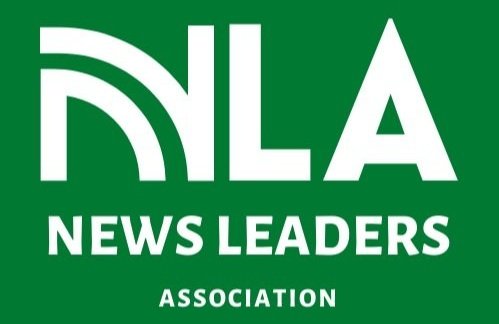Recap: First step: hiring a diverse staff. Second step? Retention.
Retaining the diverse talent you worked so hard to recruit can be challenging. While newsrooms are doing better, they are not where they need to be. Employees leave for any number of reasons. Newsroom managers serious about increasing the diversity of their staff are noticing that recruiting journalists of color is a never-ending job, partly because some leave as more are hired.
On July 15th, the News Leaders Association partnered with the Society of Professional Journalists to tackle the dynamics in newsrooms that are driving talented journalists of color away. Our panelists were Alfredo Carbajal, Managing Editor of Al Día at The Dallas Morning News, Adriane Johnson-Williams, Ph.D., Founder & Principal of Standpoint Consulting, and Natalie Piner, VP/Strategic Partner for News at McClatchy. The session, moderated by Rod Hicks, Director of Ethics and Diversity for the Society of Professional Journalists, offered strategies and tools to aid in diversity retention efforts.
The Takeaway:
As we recover from the pandemic, people are evaluating their lives and careers through a new lens. In particular, people of color are seeing this as an opportune time to step away from organizations they feel are doing them harm. While many factors can contribute to a harmful workplace, the panel highlighted the following:
A lack of transparency - how does information flow in your newsroom?
Cultivating a culture that allows different standards for different groups of people.
A lack of access to training and mentorship opportunities for people of color.
A lack of equitable access to leadership opportunities.
Putting Individuals in a box - assuming they should write about certain subjects based on their ethnic background.
Not being “heard” - conversations with management are just transactional.
Bad bosses - people of color are hurt disportionately by “bad bosses” who do not invest time and resources in others.
Executives are struggling to understand why people are leaving. Many managers feel things are equal now and they are doing a good job of managing their diverse workplace. There's an obvious disconnect between management and employees. Here are some strategies you can use to get an accurate assessment of your newsroom:
Use your data - do regular assessments to see who is getting key assignments, being promoted and receiving training/leadership opportunities.
Survey employees regularly - you just need 1 or 2 questions to find out how employees are really doing.
Have real human conversations and be open to being wrong.
To be more welcoming, mechanisms must be put in place that cultivate a more inclusive newsroom. More intentional diversity training is required at the low and mid-level management levels and there is still not enough representation of people of color at the top levels in large news organizations. Senior-level leaders must buy-in to the process. It requires being accountable and intentional in bringing about change. It’s okay to acknowledge that it’s hard work. Introspective analysis can uncover unconscious biases that might be brought to the workplace. To be successful, everyone needs to understand their role in determining a workplace culture that values diverse voices.
Remember to :
Engage mid-level and frontline management in diversity training.
Listen to people - we all like to be heard.
Make it a habit to offer genuine feedback.
Allow people to bring their full selves to candid conversations about their career.
Try putting yourself in the shoes of the person of color, what might they look for?
Think about how you make them feel.
Create a space for the individual to be valued for who they are.
Make sure their career path is outlined clearly.
Engage in conversations that are more than transactional.
Not allow social engagement to be your only way of scouting out potential leaders.
Journalists of color are often overlooked when training opportunities are available. Our panelists encouraged managers to make sure they are being inclusive when deciding who receives mentorship opportunities, newsroom leadership training and coaching.
Research has proven a diverse pool of people produces a better product. Diversity allows you to cover stories without a distorted viewpoint. Now more than ever, it’s crucial for newsrooms to be more reflective of the communities they serve. After all, different people see the world differently. The following are activities your organization can do to foster inclusivity and growth for people of color:
Provide mentorship/leadership training across company levels - there are different ways to define a leader.
Enroll your employees in NLA’s Emerging Leaders Institute which helps to empower people from underrepresented groups.
Seek out your informal leaders for advice.
Make sure your diversity initiatives are tied to a real purpose in your organization. Listen to committee members and respond to their suggestions.
Ask for feedback on what you are doing.
Evaluate if there are better ways within your organization to identify leadership skills - be aware of cultural differences.
Provide opportunities for people of color to step up and be seen by others.
Put in place structured avenues for advancement.
NLA events offer support and space for marginalized journalists through panel discussions and open dialogue. They are tied to our larger effort — the Transformative Transparency Project — which will provide the numbers, narratives, and knowledge to assist news media stakeholders in undertaking reforms that address the critical lack of newsroom diversity. We hope it helps to bring transparency to issues that take underrepresented people out of the industry.
Due to the nature of the discussions — and to keep these safe spaces — we won’t record these sessions. Sign up to receive updates on all events.

